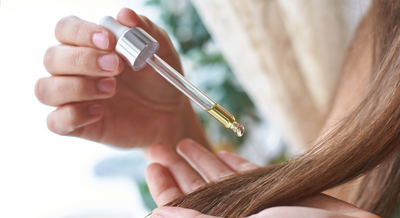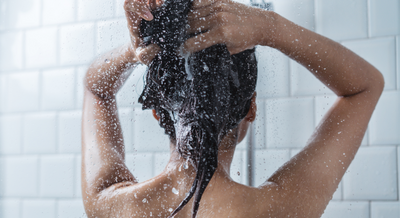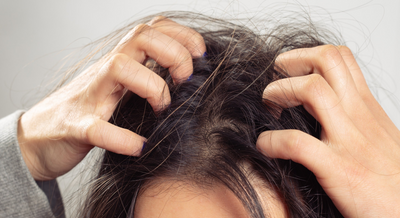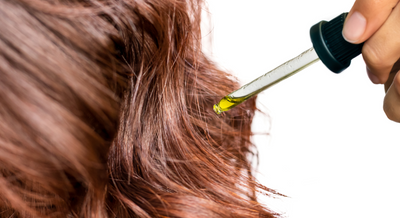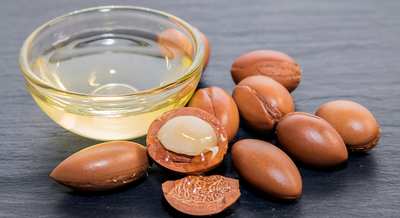Isn’t it amazing how fast this year has gone by? It may come as a shock, but winter is just around the corner, as are the cold temperatures and low humidity that come with it. This can be a welcome change for some, as the hot temperatures and high humidity of summer can cause some hair types to turn into an absolute mess, with the seasonal change offering a chance for a more relaxed head of hair that is easier to manage. On the other hand, many hair types get sent into panic mode during the transition into winter, with the low humidity causing a massive loss in hair volume. Even worse, the combination of low temperatures and low humidity can be a terrible one-two punch for hair and scalp health, leading to an increased risk of damage and breakage.
Thankfully, there’s still enough time to get ahead of the curve and prepare your hair for the upcoming winter season. If your hair thrives during the wintertime, then congrats! Enjoy your hair’s glow-up period and feel free to experiment with new styles. For the rest of us, we’ve compiled a list of four keys to perfect winter hair prep. Read below and see which of these tips and bits of advice can best work for your hair type as the year comes to a close.
Key #1: Boost Your Hair Health
First thing’s first when it comes to winter hair prep: address your hair health. Think of your hair’s health as the foundation upon which your entire routine rests upon; if your hair health isn’t right, then none of the styling or extra maintenance in the world will be able to make a difference. Due to the low humidity and drop in temperatures, it’s imperative that your hair function at its very best in order to preserve as much moisture as it possibly can. Additionally, hair runs the risk of becoming weak and fragile in the cold, meaning that any heat styling or chemical treatment can dramatically damage your hair.
To assess your hair’s health levels, take note of things like your hair elasticity, split ends, frizz, etc. One of the useful tricks out there is to stretch your hair out when it is wet and see how far it goes. If it feels like it’s about to snap, then your hair may be in an unhealthy state, meaning you need to add an intense amount of moisture while limiting heat styling and excessive washing. Additionally, consider getting your ends cut shorter than usual to ensure you enter the winter season with as little damaged hair as possible.
Key #2: Amp Up the Hydration
With the drop in humidity levels during the winter, your hair will have less moisture to pull from the air in order to hydrate itself. Additionally, the dry air will attract moisture away from your hair as well, creating a perfect storm for extra hair dryness. To combat this, you’ll want to go to work and put back in all that moisture that the air will try taking out of your hair. To do this, make it a regular habit to apply a leave-in conditioner once or twice weekly, along with a weekly hydrating hair mask, even an intensive mask that you can sleep in and allow to work overnight.
While it may feel a bit extra to have so much moisture and hydration in your hair when it doesn’t feel particularly dry at the moment, it’s important to remember that the sudden drop in temperature can cause the hair to freak out and begin leeching moisture at a rapid rate. By overloading your hair with hydration before this shift, your hair will be better prepared for the temperature shock.
Key #3: Incorporate Volumizing Products
It’s obvious that maintaining moisture levels during winter is crucial for ensuring optimal hair health, but what can be overlooked is how important moisture is for your hair’s volume and styling potential, as well. The humid, moisture-rich air of the summer provides your hair with perfect amounts of hydration needed to create a full, voluminous look, but the lack of this humidity in the winter can lead to flat and lifeless hair. Because of this volume-unfriendly weather shift, you’ll need to put in a bit of extra work in terms of volumizing your hair.
If you aren’t already, make sure to utilize a heat protectant spray prior to each blow-dry. Aside from providing a microscopic shield for your hair to prevent heat damage, many heat protection sprays also contain ingredients that help add volume to your hair while you style. Additionally, look into volumizing mousses and lotion products that help create more density and fullness in your hair prior to styling, along with a spray product like sea salt spray that can add magical amounts of body and volume.
Key #4: Give Your Scalp Some TLC
While we pay much attention to our hair during the winter (and just about every other season), make sure you aren’t overlooking the scalp, as well. It’s well known that the winter is an extremely common time for dry skin problems to occur on the face and body, and the scalp is similarly susceptible to this same dryness as well. This dryness can lead to flaking and scaling, along with uncomfortable itchiness and conditions like dermatitis. Even worse, allowing the scalp dryness to progress will only lead to inflammation, causing damage to the hair follicles and potentially causing hair loss.
To keep our scalp happy and moisturized during the winter, make sure to apply any conditioner to the scalp or as close to the scalp as possible, ensuring proper moisturization. Additionally, avoid hot water in the shower, instead dousing your scalp with cool or lukewarm water. Lastly, consider adding an oil or serum product to your rotation, applying directly to the scalp and distributing throughout in order to really seal in moisture.



